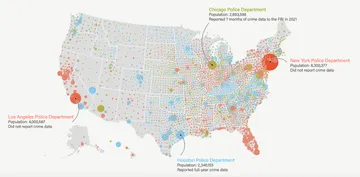A friend in California recently bestowed upon The Marshall Project these 10-ounce, carbon steel chain-link cuffs, a product of the Peerless Handcuff Company of Springfield, Mass., “Setting the Standard Since 1914.” What were we to make of this curious bit of swag? We made a few calls.
Chris Gill, the president of Peerless, told us that when the pink cuffs first came out, “it was kind of a hot thing. They have pink guns, pink badges, pink everything.” But the main demand for colored cuffs (in addition to the familiar black and nickel-plated models, they do red, blue, orange, and yellow) is not fashion but keeping track of prison property: Cellblock A uses red, Cellblock B uses blue, etc.
“And then, Joe Arpaio uses all pink handcuffs,” Gill added. The notorious Arizona sheriff, who humiliates prisoners by dressing them in pink underwear and having them sleep on pink sheets, introduced pink shackles in 2005.
Last October police in Greenfield, Mass., carried pink cuffs to mark Breast Cancer Awareness Month, which the website Jezebel remarked was “very well-intentioned, probably.”
To Leslie Acoca, who heads an advocacy group that promotes access to healthcare for incarcerated girls, the pink handcuffs are a symbol of a system that is oblivious to the special needs of young women, a system that often shackles women during childbirth. Acoca first spotted the pastel restraints in a juvenile detention facility, and was so struck by them that she has titled her book-in-progress “Pink Shackles.”
“They’re disturbing and weird and slightly prurient,” she said. “That’s sort of the way the whole juvenile justice system is for girls.”
